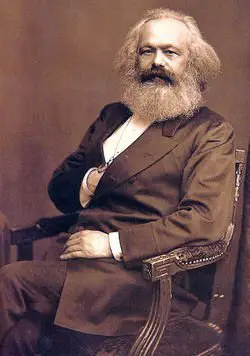Hollywood and Communism: How Did ''The Treasure of the Sierra Madre'' Support Marxist Ideology
“I know what gold does to men’s souls.”[1]These sage words were spoken by Howard; a crusty old prospector who was far wiser than his ragged appearance suggested. This character in The Treasure of the Sierra Madre was speaking the words of B. Traven and John Huston; author and screenwriter respectively. Alone, this line from the movie speaks to the theme of greed, but once we delve further into the dialogue and symbolism employed by Huston and his cast, we will discover that the message addresses significant political and economic issues. The Treasure of the Sierra Madre supports Marxist ideology by denouncing capitalism through the use of explicit dialogue, tacit symbolism, and the psychological deterioration of Fred C. Dobbs.
Tampico, Mexico of 1925 is where the tale begins. Two Americans, Fred C. Dobbs and Bob Curtin (Humphrey Bogart and Tim Holt) are subsisting on the hand-outs of strangers in Mexico. It is never discussed why the men have drifted south of the U.S. border, rather, it is left to the viewer to draw his own conclusions. As the original novel was written in 1927, it is possible that Dobbs and Curtin—— portrayed as men in their mid-thirties—— are veterans of the Great War. Another scenario is that they became disillusioned or neglected by the financial boom of the 1920’s. Regardless of their back-story, Dobbsie and Curt (as they refer to each other) are destitute members of the labor class who no longer fit into American society. They struggle daily to exist without purpose or intention, until they wander into the “Oso Negro.”
Introducing the Theme of Capitalism
The Oso is essentially a flop house with cheap cots laid closely together. This is where Dobbsie and Curt encounter Howard (Walter Huston), the older but spry prospector. As the two ex-patriots drop onto their cots, Howard is regaling a captive audience with tales of his illustrious days as a prospector and miner. At the time, gold was worth twenty dollars per ounce. A member of Howard’s audience wonders if gold is so valuable due to the fact that it is a rare find. Howard corrects his young friend, telling him that gold is all around, just waiting to be found. The true reason that gold is so valuable he explains is, “An ounce of gold, mister, is worth what it is because of the human labor that went into the finding and the getting of it.” “Human labor,” the key to Howard’s logic, is apropos to the Marxist theory of labor power. In “Wage Labor and Capital,” Marx claims that the “capitalist buys this labor power,” and uses this human labor to further his profit.[2]Conversely, the worker sells his labor simply to survive. This is the message Howard delivers to a group of men who are all of the labor class. Howard’s audience consists of a group of men, primarily Americans, who are living hand to mouth and sleeping on filthy cots in a Mexican flop house. This ilk is the very antithesis of the bourgeois class.
- ↑ John Huston, The Treasure of the Sierra Madre, (1948), DVD, directed by John Huston (Burbank, CA: Warner Home Video, 2010). B. Traven wrote the novel in 1927 yet the film did not debut until 1948. John Huston began writing the screen adaptation in November 1941. A month later, he became a member of the U.S. Armed forces. He worked under the direction of Frank Capra and was mandated to produce patriotic films for the U.S. In 1947, Huston, Humphrey Bogart (who starred in the film) and other Hollywood heavyweights went to Washington D.C. to protest the House Un-American Activities Committee’s “black-listing” of film producers, directors, and actors who were accused of being communist supporters. For more detailed information regarding the politics and activism of Huston and Bogart see, A.M. Sperber and Eric Lax, Bogart (New York: William Morrow, 1997).
- ↑ Karl Marx, “Wage Labor and Capital,” in Literary Theory: An Anthology, 2nd ed., ed. Julie Rivkin and Michael Ryan (Malden, MA: Blackwell, 2004), 657.

